#serge chermayeff
Text

Pavillon De La Warr, Bexhill on Sea, Royaume-Uni. 1935. Architectes : Erich Mendelsohn & Serge Chermayeff. - source Eric Hamilton.
10 notes
·
View notes
Text
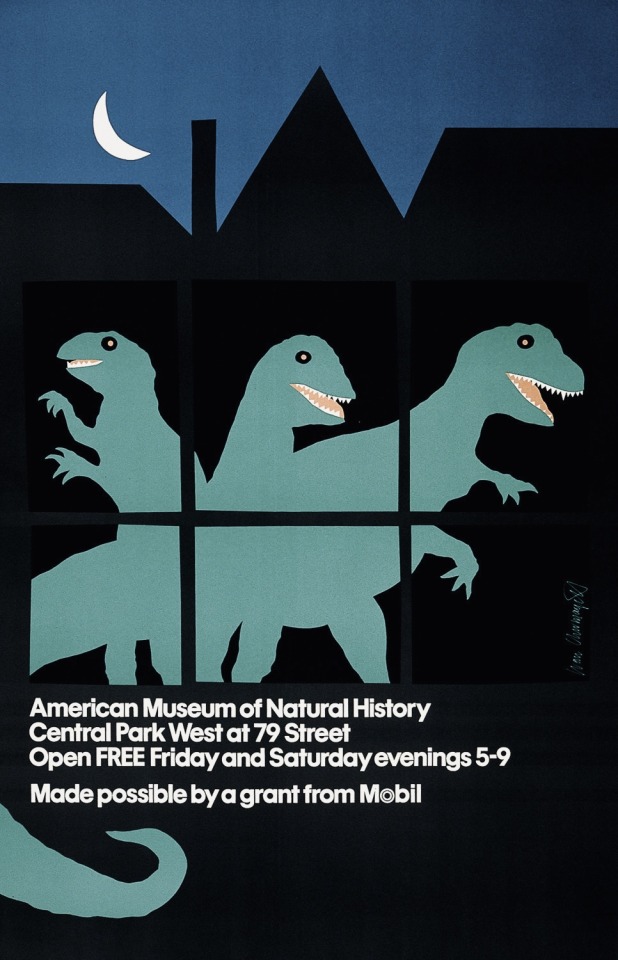
4 notes
·
View notes
Text

House at Bentley Wood, Halland, East Sussex
1938
Serge Chermayeff
Image from RIBApix
Modernism Beyond Metro-Land
47 notes
·
View notes
Text

Leonora Carrington
~ OBE (6 April 1917–25 May 2011 was a British-born Mexican artist, a surrealist painter and a novelist. She lived most of her life in Mexico City.
Carrington was born in Clayton Green, Chorley, Lancashire, England. Her father was a wealthy textile manufacturer; her mother, Maureen Moorhead, was Irish. She also had an Irish nanny, Mary Cavanaugh, who told her Gaelic tales. Leonora had three brothers. Her brothers were Patrick, Gerald, and Arthur. Places she lived as a child included a house called Crookhey Hall.
Educated by governesses, tutors and nuns, she was expelled from two schools, including New Hall School, Chelmsford, for her rebellious behaviour until her family sent her to Florence where she attended Mrs. Penrose's Academy of Art. Her father was opposed to an artist's career for her, but her mother encouraged her. She returned to England and was presented at Court, but according to her, she brought a copy of Aldous Huxley's Eyeless in Gaza (1936) to read instead. In 1935, she attended the Chelsea School of Art in London for one year but thanks to her father's friend Serge Chermayeff, she was able to transfer to the Ozenfant Academy in London from 1935-1938.
She saw her first Surrealist painting in a Left Bank gallery in 1927 (when she was ten years old) [citation needed] and met many Surrealists, including Paul Éluard[citation needed]. She became familiar with Surrealism from a copy of Herbert Read's book 'Surrealism' (1936) that her mother gave her. Leonora Carrington found little encouragement from her family to forge an artistic career.
Matthew Gale, curator at Tate Modern, singled out Surrealist poet and patron Edward James as the only champion of her work in Britain. James bought many of her paintings, and in 1947 arranged a show for her work at Pierre Matisse's Gallery in New York. Some works are still hanging at his former family home, now West Dean College in West Dean, West Sussex.
Sources: http://en.wikipedia.org/wiki/Leonora_Carrington
http://www.telegraph.co.uk/culture/art/art-features/7618799/Leonora-Carrington-last-of-the-great-Surrealists.html
http://www.carringtonleo.5u.com/
3 notes
·
View notes
Text
Architect Serge Chermayeff's Midcentury Masterpiece Near Yale Hits the Market for $1M
http://dlvr.it/T5NcKD
0 notes
Text
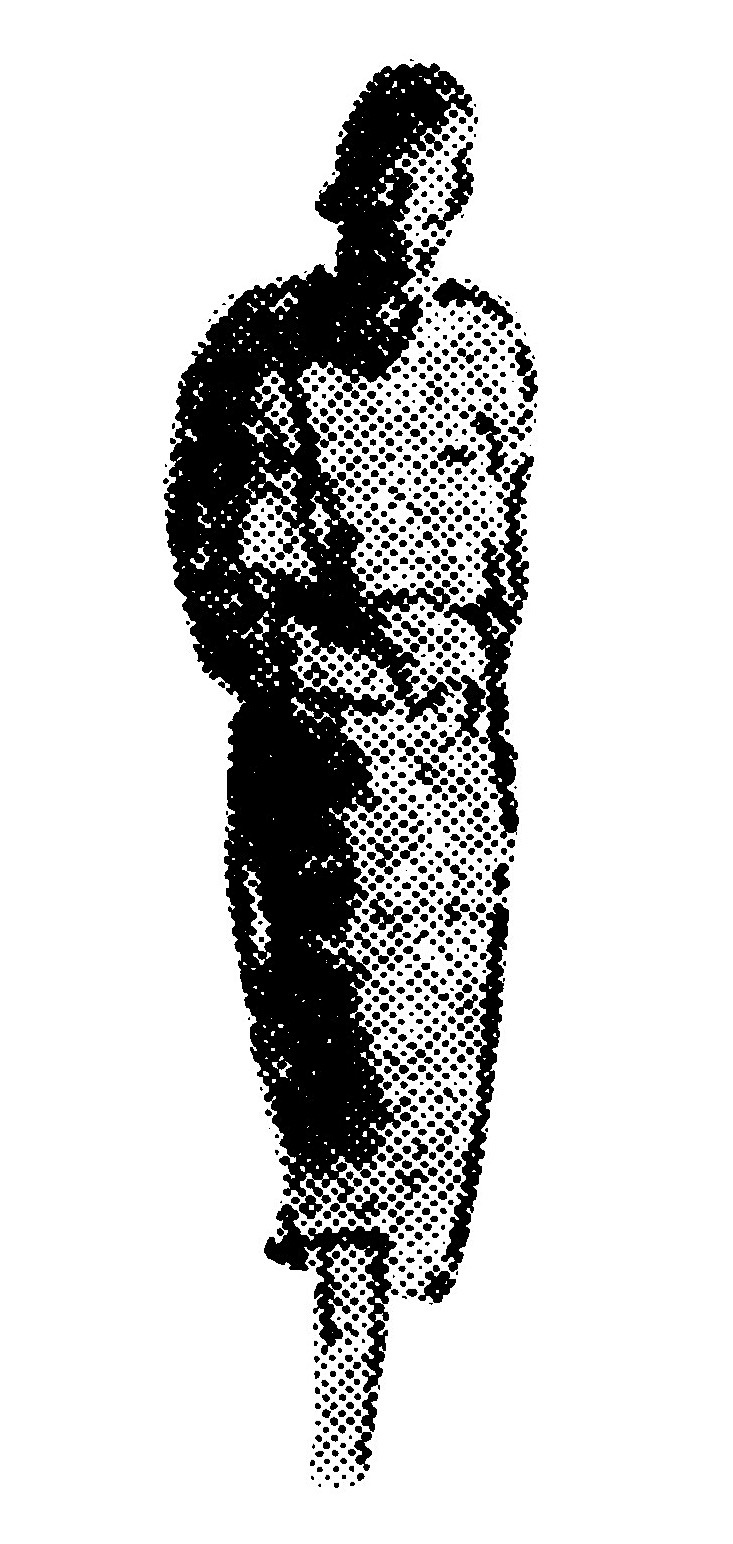
Serge Chermayeff / De La Warr Pavilion, Bexhill on Sea, UK / charcoal drawing, perspective.
0 notes
Text
0 notes
Photo

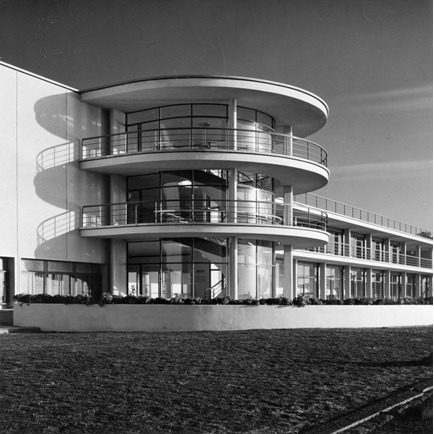
De La Warr Pavilion in Bexhill-on-Sea, East Sussex, designed by Erich Mendelsohn and Serge Chermayeff (1935).
2 notes
·
View notes
Photo
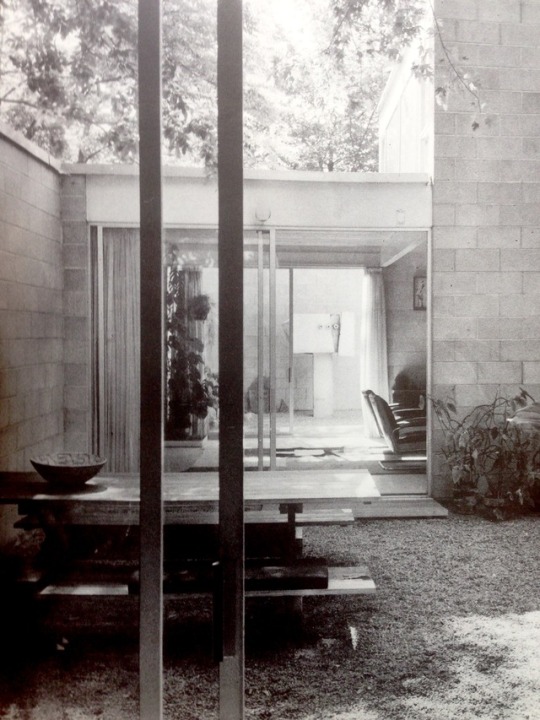
Serge Chermayeff designed this house for his family. New Haven, 1960s.
9 notes
·
View notes
Photo

De La Warr Pavilion in Bexhill-On-Sea guarded by a local. It was designed by Erich Mendelsohn and Serge Chermayeff and opened in 1935.
72 notes
·
View notes
Video
iPhone Abstract No: 35 by No Great Hurry
Via Flickr:
The stairwell at the modernist De La Warr Pavilion overlooking the beach in Bexhill on Sea. By coincidence, the centre of this photo looks like a stylised ‘60’. My 60th birthday is this Saturday, 30th September 2017. This pavilion was built in 1935. Architects: Erich Mendelsohn and Serge Chermayeff.
#B Square Competition Third Place#silvertone#shading#shadows#light#60th birthday#birthday#60#iPhone Abstract#architects Erich Mendelsohn and Serge Chermayeff#De La Warr#No Great Hurry#Robin Maurice Barr#Bexhill#modernist#iphonography#iPhone#modernism#architecture#abstract#stairs#circular#looking up#building#square#art deco#railings#minimal#minimalistic#contrast
1 note
·
View note
Text
Summary, Week 7
Bauhaus and Beyond
Bauhaus designers explored purity of form, geometry, material integrity, and function to produce an entirely new aesthetic. Their functional rationalism was perfectly suited to tubular steel, and many of the most successful Bauhaus designs include metal tubing.
Designers around the world were aware of the new ideas being explored in Germany. American designers, with a greater interest in manufacturing, and with an interest in consumer needs, incorporated some Bauhaus thinking, and LOTS of tubular steel, to create production furniture with less artistic integrity, but a much wider acceptance. The struggle to balance good design with ease of manufacture, and to include customer preferences, is visible in the goods produced by American Industrial Designers at this time.
people you must know:
• marcel breuer
• marianne brandt
• wilhelm wagenfeld
• mies van der rohe
• le corbusier
• charlotte perriand
• peter behrens
• eileen gray
• donald deskey
• gilbert rohde
people you really should know:
• henry van de velde
• walter gropius
• lilly reich
• poul henningsen
• gerrit rietveld
• kem weber
people you could know, if you want to know more people:
• mart stam
• lilly reich
• pierre jeanneret
• hans & wassili luckhardt
• laszlo moholy-nagy
• rené herbst
• wolfgang hoffmann
other people included in the lecture whom you need not know but might want listed:
• reinhard and max mannesmann
• john vassos
• herbert bayer
• gerhard behrend
• gerhard marks
• hans przyrembel
• hin bredendieck
• pierre jenneret
• heath robinson
• anton lorenz
• louis sognot
• charlotte alix
• andré sornay
• adrienne gorska (Tamara's sister)
• jean burkhalter
• oliver bernard
• practical equipment limited (pel)
• serge chermayeff
• giuseppe terragni
• walter knoll
• j.j. oud
• erik gunnar asplund
• paul schuitema
• nathan horwitt
• peter bang
• emile guyot/Guillot
• alfred zeffner
• arie willem verbeek
• william lescaze
people we all need to know more about:
• ilonka karasz
• pola hoffmann
• alice louise roth
2 notes
·
View notes
Text
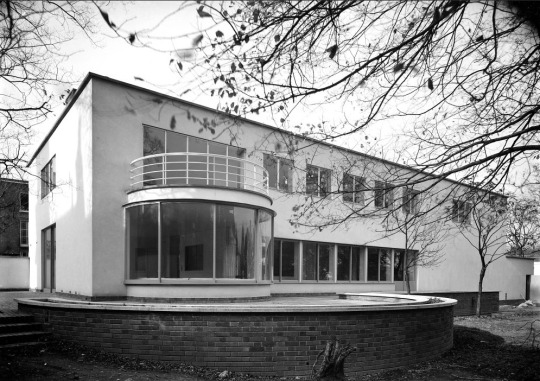
64 Old Church Street, Chelsea
1936
Erich Mendelsohn & Serge Chermayeff
Image from RIBApix
Modernism in Metro-Land
75 notes
·
View notes
Photo
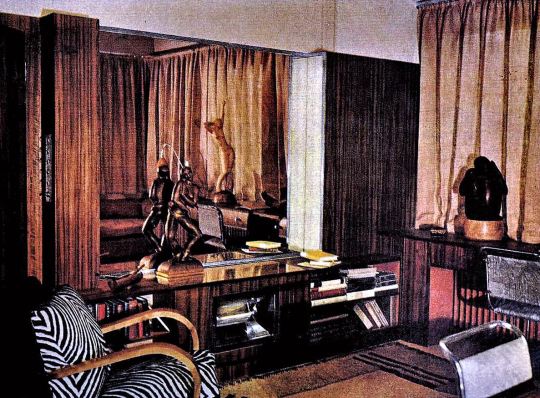
Living room-studio by Serge Chermayeff. Sculptor A. G. Gibbons Grimling. Early 1930s.
70 notes
·
View notes
Text
Glen Plaid
“One of the most promising newcomers in the highly competitive field of fabric design is a youthful, multi-talented New Yorker, Joel Robinson,” Ebony magazine proclaimed in 1952.[1] Robinson’s printed fabric Ovals had been shown that winter in The Museum of Modern Art’s 1951 Good Design exhibition, making him the first African American to be included in the influential exhibition series, an achievement acknowledged in the multi-page article in Ebony. Jet magazine also covered the groundbreaking nature of his inclusion.[2] When the exhibition series ended in 1955, Robinson remained unique in this distinction.
At the time, Robinson was a 29-year-old native New Yorker working as a graphic designer in the advertising industry, first for pharmaceutical advertising agency William Douglas McAdams, and later as creative director and executive vice president at the David D. Polon Advertising Agency.[3] His celebrated fabric was produced by L. Anton Maix Fabrics. Maix was noted for his innovative collections of prints for the modern interior, often created in collaboration with artists and designers from other fields, including architect Serge Chermayeff, graphic designers Paul Rand and Alvin Lustig, industrial designer George Nelson, and furniture designers Jens Risom and Paul McCobb. After the success of Ovals, Maix introduced two Ovals variations and three additional designs by Robinson as part of his Kaleidoscope collection: Roman Candles, Honeycomb, and Glen Plaid, a fine linear design of interlocking bands of narrow rectangles in brown, yellow and red. A swatch book from the New York shop of Georg Jensen, also in the museum’s collection, includes Glen Plaid and other designs from the Kaleidoscope collection, illustrating the type of modern, design-forward retailer that promoted Maix’s fabrics.
Despite his breakout early success as a textile designer, there is no evidence to date that Robinson continued in the field after his first, groundbreaking collaborations with Maix. Former Cooper Hewitt Curatorial Fellow Andrew Gardner explored the sometimes-failed promise of the Good Design program in the essay “Lilly White”: Joel Robinson and Black Identity in MoMA’s Good Design Program.”
Susan Brown is an Associate Curator and Acting Head of the Textiles Department.
[1] N/A, “Fabric Designer,” Ebony, May 1952.
[2] N/A, “Exhibits Prize-Winning Fabrics,” Jet, December 13, 1951.
[3] N/A, “Named Vice Prexy of N.Y. Ad Firm,” Ebony, February 25, 1954.
from Cooper Hewitt, Smithsonian Design Museum https://ift.tt/32YbxrD
via IFTTT
19 notes
·
View notes
Video
De La Warr Pavilion - The South Stair Tower by Richard Walker
Via Flickr:
The De La Warr Pavilion is a grade I listed building, located on the seafront at Bexhill on Sea, East Sussex, on the south coast of England. The Art Deco and International Style building was designed by the architects Erich Mendelsohn and Serge Chermayeff and constructed in 1935. Although sometimes claimed to be the first major Modernist public building in Britain, it was in fact preceded by some months by the Dutch-influenced Hornsey Town Hall. In 2005, after an extensive restoration, the De La Warr Pavilion reopened as a contemporary arts centre, encompassing one of the largest galleries on the south coast of England.
1 note
·
View note